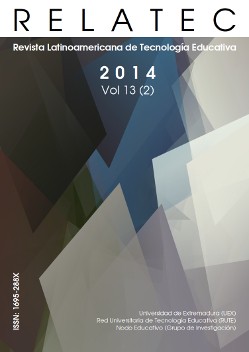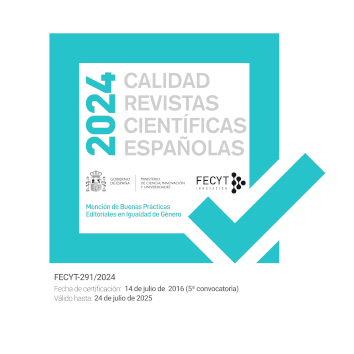Utilização dos recursos do Google Earth e do Google Maps no ensino de ciências / Use of Google Earth and Google Maps in Science Teaching
DOI:
https://doi.org/10.17398/1695-288X.13.2.89Keywords:
TIC, recursos tecnológicos, Ensino de Ciências, Google EarthTM, Google MapsTMAbstract
Apresenta-se um estudo teórico sobre o uso do Google EarthTM e do Google MapsTM no ensino de ciências visando identificar, em artigos de periódicos e eventos, como estão sendo utilizados esses recursos em propostas de ensino, as contribuições e suas potencialidades de uso. Foram selecionados artigos, desde o ano de 2005, quando os aplicativos foram criados, até o ano de 2014, que fizeram uso dessas geotecnologias em diversas disciplinas. O estudo indica que os recursos do Google EarthTM e do Google MapsTM, desde sua criação, têm possibilitado o desenvolvimento de um número crescente de pesquisas, sendo mais recorrentes as de natureza exploratória, sobre propostas de atividades de ensino, com foco no Ensino Fundamental e Médio, relativas à diversas disciplinas da área de ciências, tais como Matemática, Física, Geografia e Geomorfologia. Os autores indicam que os recursos propiciam a aprendizagem, pelo caráter inovador das atividades e por estimularem os estudantes à compreensão da realidade em que vivem. Muitos indicam a exploração do meio ambiente como um recurso que potencializa a aprendizagem, em atividades mediadas pelo professor, podendo gerar discussões sobre questões sociais, políticas e econômicas, favorecendo a formação científica e a formação crítica do estudante. A análise dos artigos indica que o uso dos recursos do Google EartTM são mais frequentes que o uso do Google MapsTM, sendo que as atividades se concentram mais no ensino de Geografia, voltadas para o Ensino Fundamental.
Abstract
This work presents a theoretical study about the use of Google EarthTM and Google MapsTM in science teaching aiming to identify, in articles of journals and conferences, how these resources are being used in educational proposals, as well as their contributions and potential uses. The articles were selected among those which applied geotechnologies in several disciplines, from the year 2005, when applications were created, until 2014. The study indicates that the resources of Google EarthTM and Google MapsTM, since their creation, have enabled the development of an increasing number of researches. The most frequent are those of exploratory nature, on educational activities focusing on elementary and high school, regarding several courses of sciences such as mathematics, physics, geography and geomorphology. The authors indicate that the resources facilitate learning, due to the innovative character of the activities and also because they stimulate students to understand the reality in which they live. Many authors point to the exploitation of the environment as a resource that enhances learning activities mediated by the teacher, since they can generate discussions on social, political and economic issues, promoting scientific education and critical formation of the student. The analysis of the articles indicates that the use of Google EartTM resources are more frequent than the use of Google MapsTM, and the activities focus mainly on Geography teaching, oriented for the elementary school.
Downloads
Downloads
Published
Issue
Section
License
Authors who publish in this journal accept the following conditions:
1. The Author retains copyright in the article. Upon acceptance of the article, the author shall grant to the Publisher the right of first publication of the article. with the dcoument registered with the Creative Commons Attribution-NonCommercial-NoDerivative 4.0 International (CC BY-NC-ND) license, which allows to third parties to use what is published whenever they mention the authorship of the work and the first publication in this journal.
2. Authors can make other independent and additional contractual agreements for the non-exclusive distribution of the article published in this journal (eg, include it in an institutional repository or publish it in a book) provided they clearly indicate that the work was published for the first time in this journal.
3. Authors are allowed and recommended to publish their work on the Internet (for example on institutional or personal pages) before and during the review and publication process, as it can lead to productive exchanges and a greater and faster diffusion of published work (see The Effect of Open Access).









